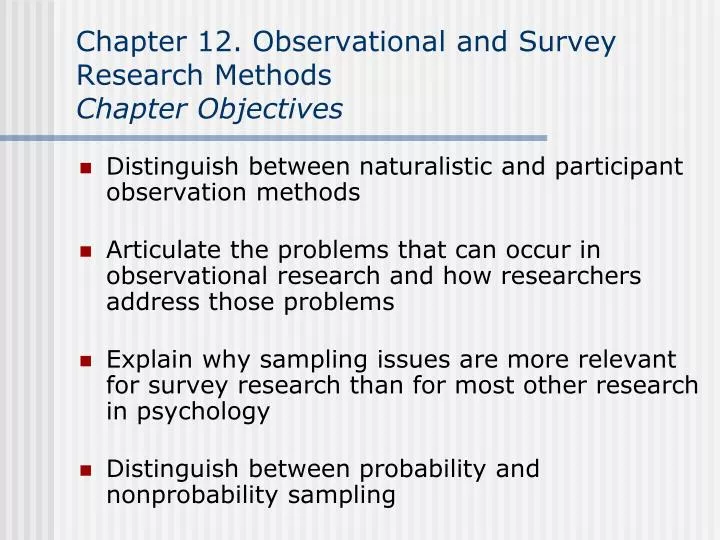

Participant observation is very similar to naturalistic observation in that it involves observing people’s behavior in the environment in which it typically occurs. In participant observation, researchers become active participants in the group or situation they are studying. Participant ObservationĪnother approach to data collection in observational research is participant observation. While they may be on their best behavior at first, in a fairly short amount of time they are, flirting, having sex, wearing next to nothing, screaming at each other, and at times acting like complete fools in front of the entire nation. Think about reality shows like Big Brother or Survivor where people are constantly being observed and recorded. In other words, over time people habituate to being observed. However, we now know that people often become used to being observed and with time they begin to behave naturally in the researcher’s presence. So disguised observation is less reactive and therefore can have higher validity because people are not aware that their behaviors are being observed and recorded. For instance, you may act much differently in a bar if you know that someone is observing you and recording your behaviors and this would invalidate the study.

In the case of undisguised naturalistic observation, the concern with reactivity is that when people know they are being observed and studied, they may act differently than they normally would.

Reactivity refers to when a measure changes participants’ behavior. However, one concern with undisguised naturalistic observation is reactivity. In cases where it is not ethical or practical to conduct disguised naturalistic observation, researchers can conduct undisguised naturalistic observation where the participants are made aware of the researcher presence and monitoring of their behavior. On the other hand, one of the arguments against the ethicality of the naturalistic observation of “bathroom behavior” discussed earlier in the book is that people have a reasonable expectation of privacy even in a public restroom and that this expectation was violated. For this reason, most researchers would consider it ethically acceptable to observe them for a study. Grocery shoppers putting items into their shopping carts, for example, are engaged in public behavior that is easily observable by store employees and other shoppers. Such an approach is called disguised naturalistic observation. Ethically, this method is considered to be acceptable if the participants remain anonymous and the behavior occurs in a public setting where people would not normally have an expectation of privacy. Researchers engaged in naturalistic observation usually make their observations as unobtrusively as possible so that participants are not aware that they are being studied. However, naturalistic observation could more simply involve observing shoppers in a grocery store, children on a school playground, or psychiatric inpatients in their wards. She examined such things as chimpanzee’s social structure, mating patterns, gender roles, family structure, and care of offspring by observing them in the wild. Jane Goodall’s famous research on chimpanzees is a classic example of naturalistic observation. Dr. Goodall spent three decades observing chimpanzees in their natural environment in East Africa. Thus naturalistic observation is a type of field research (as opposed to a type of laboratory research). Naturalistic observation is an observational method that involves observing people’s behavior in the environment in which it typically occurs. There are several different types of observational research designs that will be described below. The data that are collected in observational research studies are often qualitative in nature but they may also be quantitative or both (mixed-methods). As described previously, observational research is non-experimental because nothing is manipulated or controlled, and as such we cannot arrive at causal conclusions using this approach.

More generally, the goal is to obtain a snapshot of specific characteristics of an individual, group, or setting. The goal of observational research is to describe a variable or set of variables. The term observational research is used to refer to several different types of non-experimental studies in which behavior is systematically observed and recorded. Describe the strengths and weakness of each observational research method.List the various types of observational research methods and distinguish between each.


 0 kommentar(er)
0 kommentar(er)
